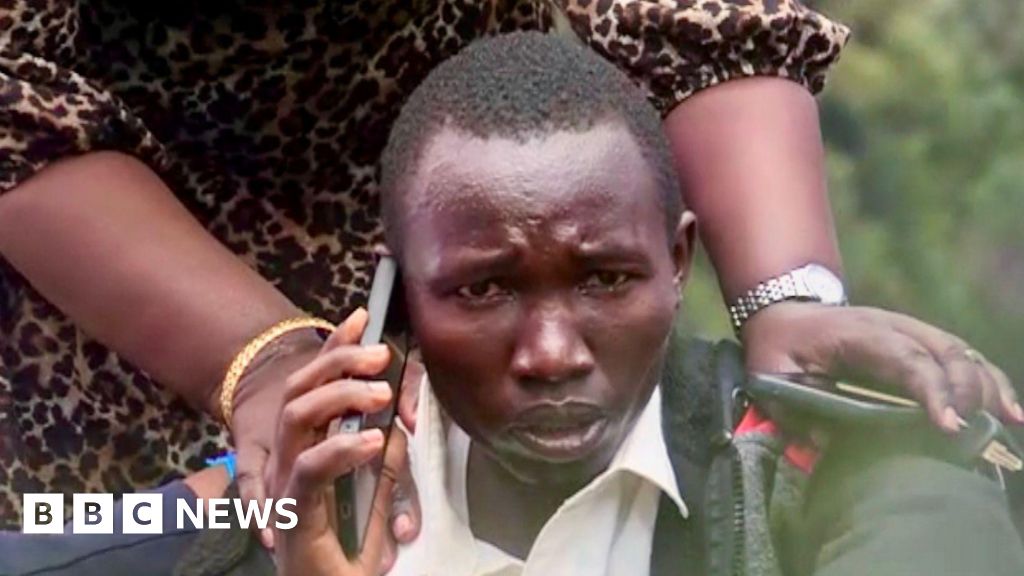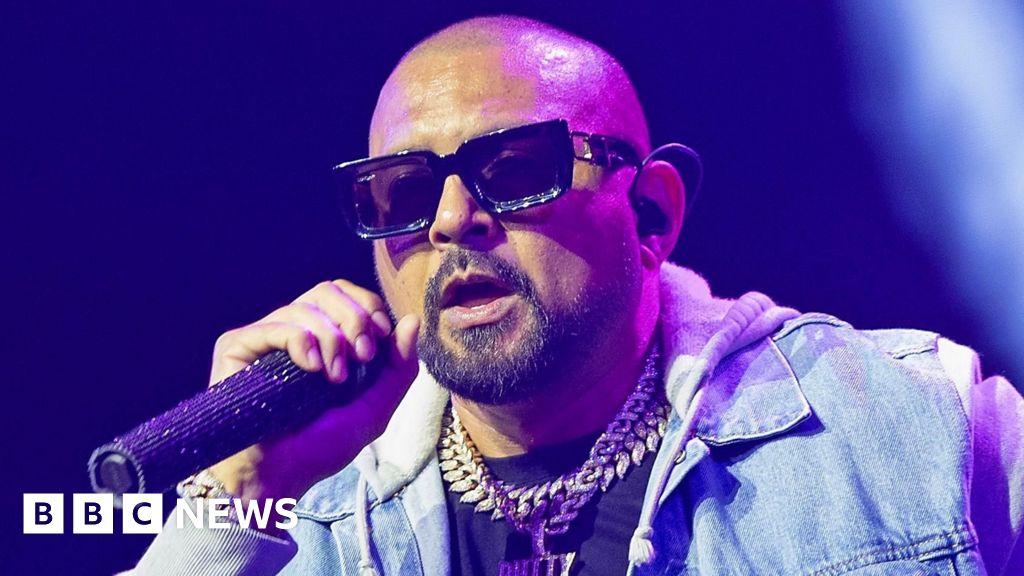This article is part of The D.C. Brief, TIME’s politics newsletter. Sign up here to get stories like this sent to your inbox.
Tuesday’s balloting may well yield a socialist mayor in New York City, two pragmatic Democratic governors in New Jersey and Virginia, and a seal of approval from California voters for Democrats to pursue nakedly partisan gerrymandering.
Election Day 2025 may also give the United States some big hints about how next year’s midterms might go. With House Republicans defending the narrowest of majorities next year, both parties are watching closely to see what to glean about the electorate from returns on Tuesday, including a special election in a reliably Democratic district in Texas to replace the late Rep. Sylvester Turner.
Here’s what to watch for in the four big races:
New York City Mayor
To understand how intense the race to lead New York City has become, just look at the early-vote numbers. In the first four days of early voting, almost 300,000 New Yorkers turned in their ballots. Four years earlier, the number was about 55,000.
The Democratic nominee, Zohran Mamdani is the clear favorite to capture New York’s Mayor’s Office. He has been leading in all the polls and has drawn massive crowds. But he is an indisputably polarizing figure. Along with vying to be the city’s first democratic socialist mayor, Mamdani would also be its first Muslim mayor, a fact that has made his past support for Palestinian causes a major sticking point for some voters.
While all the indicators suggest Mamdani will have a good night, former Gov. Andrew Cuomo has proven stubborn in his chase. After losing the Democratic nomination to Mamdani, he is running as an independent and trying to mount a comeback for the ages. A Clinton-era Cabinet Secretary who is himself the son of a former Governor, Cuomo was forced to resign as Governor after a raft of women came forward with complaints about inappropriate behavior and an independent report concluded that he sexually harassed at least 11 women and then retaliated against them for complaining. (Cuomo has consistently denied wrongdoing.) Nevertheless, Cuomo got roughly 44% of the vote in the primary, giving him cause to think he could fare better when all New Yorkers weighed in.
Then there’s the Republican nominee, Curtis Silwa, a colorful radio host known for patrolling the New York City subway with the Guardian Angels. Both of New York’s tabloids called for him to drop out during the final week in order to give Cuomo a shot at blocking Mamdani. But Silwa, who was the GOP nominee in 2021 and walked away with 28% of the vote, refused to shed the spoiler lane. “If a Mack truck hit me and I was turned into a speed bump out here, I’m still on the ballot,” he said in the final days of campaigning.
So, too, is the name of incumbent Mayor Eric Adams; he dropped out of the race in September, after the ballots were printed. Adams won in 2021 as a Democrat but decided to seek re-election as an independent. But he couldn’t shake a string of scandals, a federal indictment, and his subsequent courtship of President Trump. (For more on Adams, check out Molly Ball’s latest, in which she spent a day crisscrossing the city with Adams.)
So the big questions for election night are these: Does Mamdani win with a majority? And does it impact his ability to execute his agenda if he doesn’t?
And the question that will take longer to answer: Will his brand of progressivism stain the Democratic Party or shape it?
Virginia Governor
Virginia is one of two states who pick their CEO a year after a presidential campaign. Historically, the party that wins the White House loses the top job in Richmond, but that trend seems to have gone wobbly in the last few years. That’s why Republican Lieutenant Governor Winsome Earle-Sears is still chasing a promotion against the Democrat, Rep. Abigail Spanberger, despite consistent polling that is not in her favor.
Earle-Sears, an outspoken supporter of Trump, has run a culture war-saturated campaign with transgender rights her main cudgel against Spanberger, a former CIA officer whose time in Washington has been marked by a pragmatic streak. (After the 2020 campaign, Spanberger famously told her colleagues to knock off left-leaning rhetoric because it was alienating voters and costing Democrats seats.) But after a texting scandal involving Jay Jones, the Democratic nominee for Attorney General, took over headlines, Earle-Sears pivoted in a big way to link it back to Spanberger, who has dodged and never called for Jones to exit the race as penance for 2022 text messages that included a prescription of “two bullets to the head” for a colleague in the state legislature. Polls suggest the texting scandal has tightened the AG race up considerably.
Still, it’s hard to view any of these races outside of the lens of geography. So many voters in Virginia are commuters to Washington or linked to federal programs, especially the Department of Defense and its armed services. Trump’s rampage through federal programs has proven a liability there.
Meanwhile, the race for the second spot has drawn an unusual level of interest. Lieutenant Governor nominee John Reid could become the nation’s first openly gay Republican to win statewide office. But a not-so-whispered campaign has dogged him, and the former Capitol Hill aide-turned-talk radio host would rather talk about absolutely anything else. (He is running against Democratic nominee state Sen. Ghazala F. Hashmi.) Outgoing Virginia Gov. Glenn Youngkin called on Reid to drop out of the race after allegations that he had reposted dozens of photos of nude and seminude men on a social media account became public. (Reid denied the account was his and refused to quit the race.)
So here is what to watch for on Tuesday: Will Democrats sweep the statewide races, or will Virginia voters side with Republicans in some cases? The latter outcome suggests certain brands of Trumpism can still win favor with voters, even amid the constant churn of chaos emanating south from Washington?
New Jersey Governor
Where Earle-Sears is doing the Full MAGA, Jack Ciattarelli is being way more circumspect about Trump. “A relationship is important. That doesn't mean we don't disagree,” the longtime fixture in state GOP circles told TIME during a recent hour-long interview on his campaign bus. In a state that is reliably blue, Ciattarelli needs AlwaysTrumpers, as well as a good share of MaybeTrumpers and NeverTrumpers to prevail. Polls suggest this could be one of the closest races of the evening. (For more on Ciattarelli, check out my colleague Nik Popli’s dispatch from Paramus.)
The Democrat on the ballot, Rep. Mikie Sherrill, is a retired Navy Lieutenant who flew helicopters. She too is trying to be careful. She bested five rivals to win the nomination, proving that discipline has its advantages. If it doesn’t involve lowering costs of all kinds, she is not really interested in lingering on it. From the start, her campaign braced for a tough final push; no less than Barack Obama is heading to the state in the final days to pitch in. (He’s also doing that in Virginia.)
Democrats are trying to win the governor’s office for a third straight term, an accomplishment unmatched by either party since 1961. Both parties have been spending heavily there, and for good reason: the state’s sizable Hispanic population swung toward Trump last year in big ways, closing his loss to just six points, an improvement from losing Jersey by 16 points four years earlier. Ciattarelli came within three points of winning four years ago, and that was before Trump made unexpected inroads with Hispanic voters. In every single competitive House race next year, the Hispanic population exceeds the national average, meaning any losses in the historically Democratic bloc could cost Republicans their narrow majority.
Meanwhile, lost on no one is that New Jersey and New York share the biggest media market on the East Coast. When folks in New Jersey turn on their local stations, it’s the same feed denizens of Gotham are consuming. And a lot of that coverage is about Mamdani, his democratic socialist platform, and promises of a new approach to government. In the Garden State, that’s a tough sell. At the same time, it’s also tough for Democrats to get jazzed about Sherrill and her by-the-book traditionalism.
So the question that needs to be answered on Election Day is this: Can a Democrat’s laser focus on costs win back crucial Hispanic voters, or will Trump’s breakthrough with them—combined with a Mamdani drag—give Republicans reason to look at 2026 with anything but dread?
California’s Prop 50
On the opposite coast, it’s a race that could decide not just how ready Democrats are to fight fire with fire, but truly who runs Washington after next year’s midterms.
Democrats are heading into 2026 knowing that they’re likely going to be down five House seats from Texas after the state redrew district lines to eliminate blue strongholds. In response, Newsom decided that if deep-red Texas can do it, so can California—but with a distinction so he can claim it’s democratic. Years ago, Californians voted to have a commission handle its redistricting once a decade and take politics out of the mix. Now, they’re on track to vote to eliminate that commission and return the partisanship to political cartography.
The redistricting in California could give Democrats the five seats they are likely to lose from Texas. That, in turn, could help them claw back the majority and, with it, an ability to stop Trump’s legislative agenda for the final two years in office. With House control, Democrats could have oversight hearings and dig more into just what is happening now.
The ding on Democrats since Trump emerged is that they are still playing by the old rules. It’s in their DNA to stick to the norms, to abide by protocol, to do “the right thing” even if it means losing. “When they go low, we go high,” Michelle Obama famously said. Well, things are pretty low these days as Trump continues to thrash norms; he literally bulldozed the East Wing of the White House, wants to get back into testing nukes, and has made billions in personal wealth while holding office.
The question that needs answered on Election Day there: Do Democrats need to update their rallying cry to When they go low, we go lower?
Make sense of what matters in Washington. Sign up for the D.C. Brief newsletter.

 6 hours ago
1
6 hours ago
1










 English (US) ·
English (US) ·